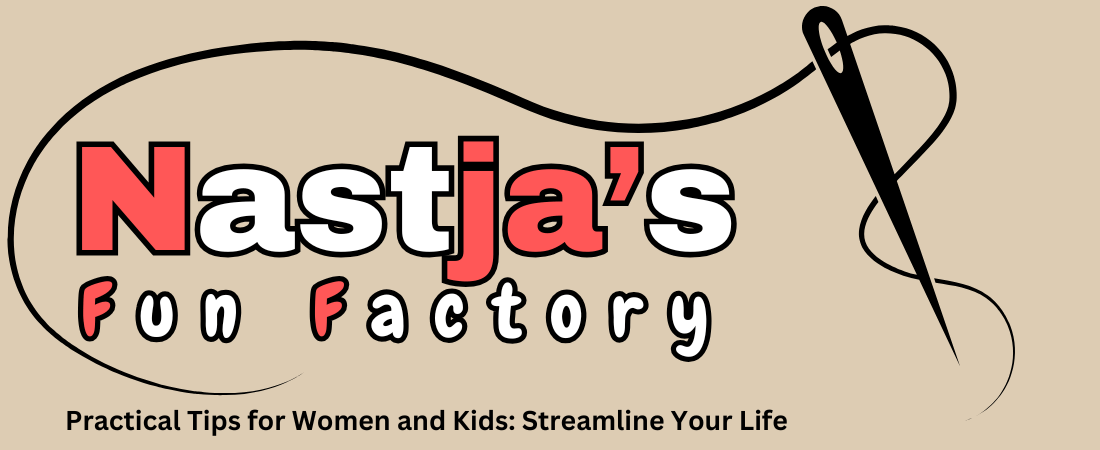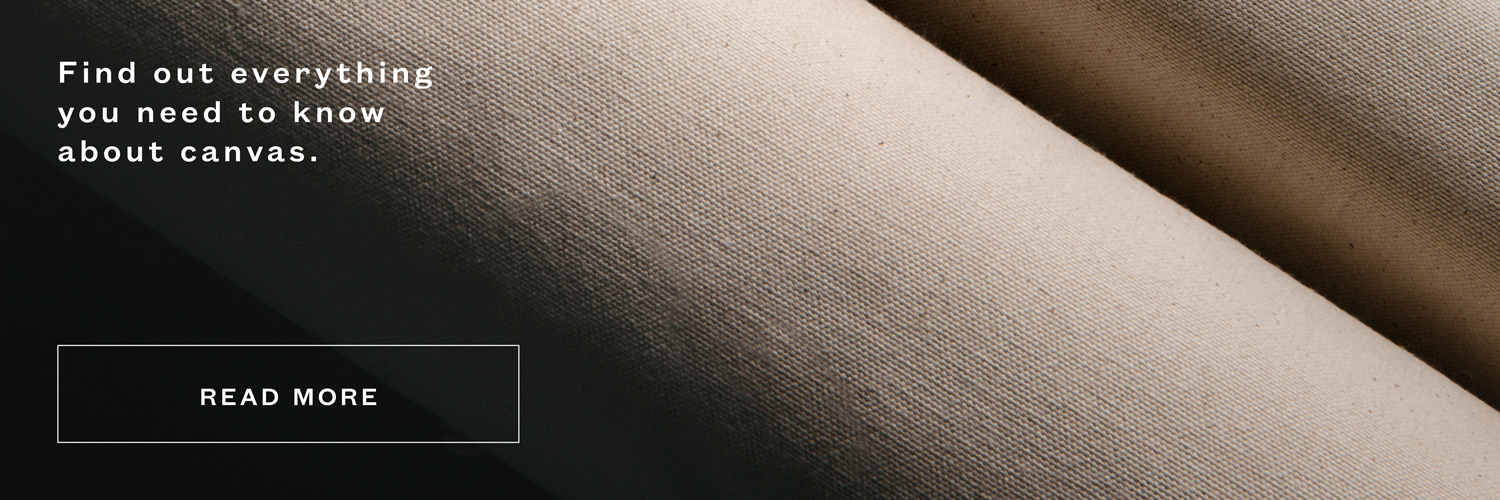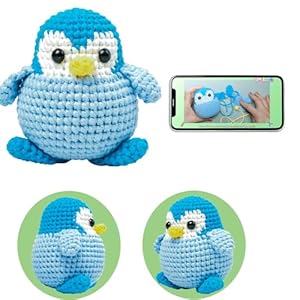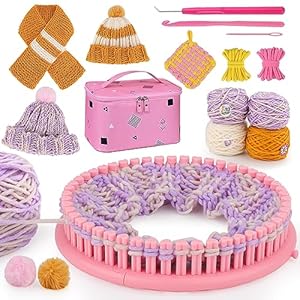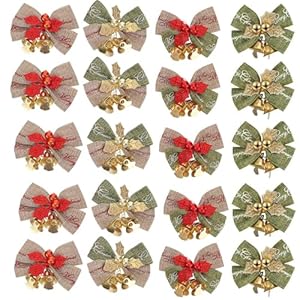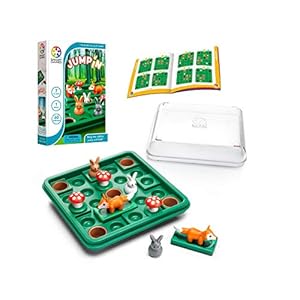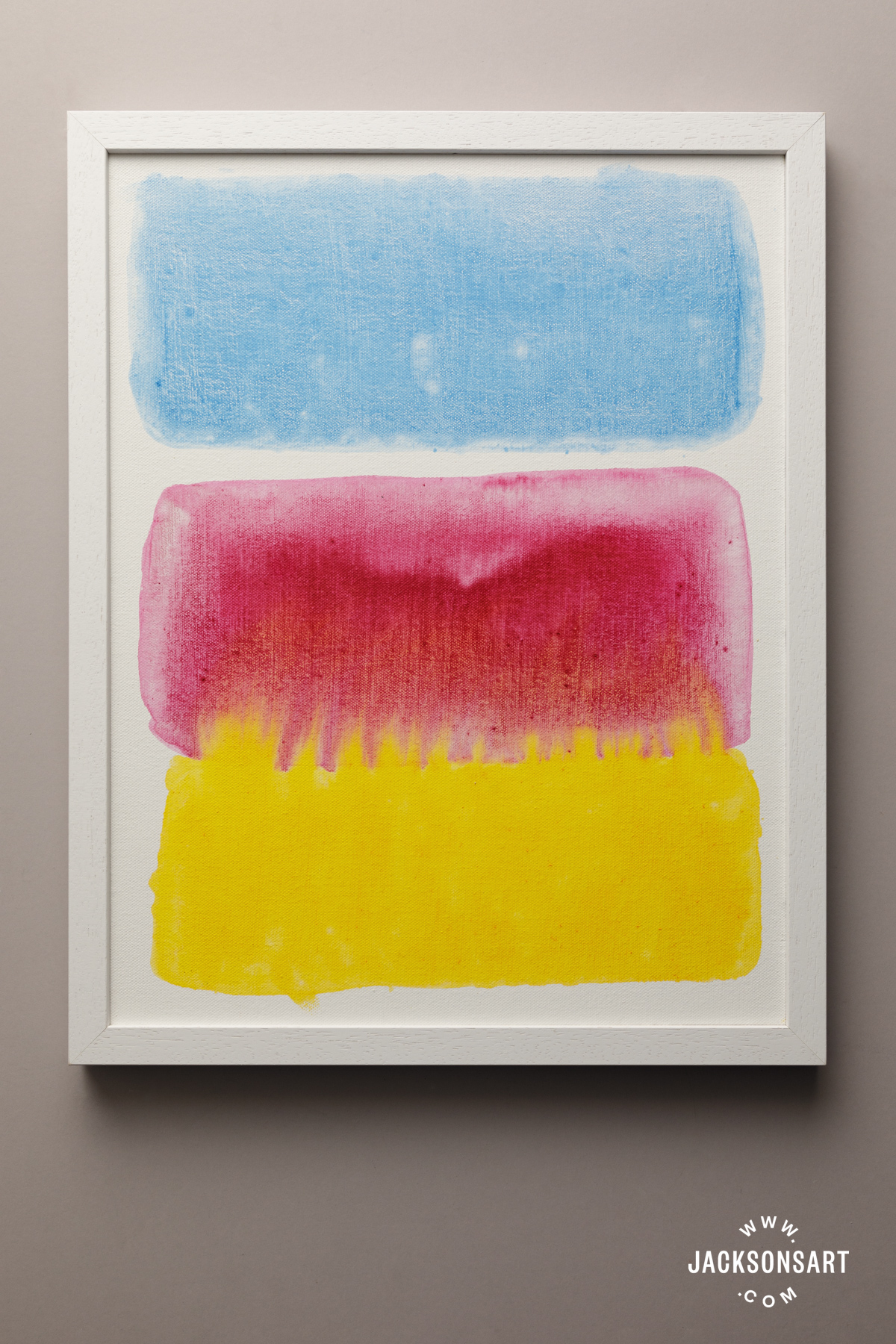
Jackson’s have both ready-made frames and bespoke custom frames. The ready-made frames are available in different depths and finishes with choices for canvas, panel, and work on paper; the bespoke frames are available in a larger selection of moulding shapes and colours and are cut to your custom size for self-assembly. Here, we show you how to choose the best picture frame hanging hardware for your framed painting and how to attach it to the frame.
How to Choose Picture Frame Hanging Hardware
If you are framing a painting yourself, you will need to choose the style of frame for your work and mount your painting in it. After that, you need to decide what kind of hardware you would like on the back to enable the framed painting to be hung on the wall or on a gallery cable hanging system or from a picture rail. The requirements of where it will be hung and the size and weight of the framed painting are the main considerations.
Jackson’s ready-made frames come with all the hardware for mounting your work into the frame and two D-rings, screws, and cord for hanging it. If you ordered a bespoke size, self-assembly frame, you will need to purchase these fixings separately. They can be ordered with the frame pieces at the bottom of the Frame Builder page.
To help you decide which fixings to choose, consider how it will be hung on the wall and the size and weight of the artwork.
Hardware for Work to Hang From a Gallery Cable System
If the painting is going into a show, they will usually give information about framing and specify what hanging hardware is needed. For example, if the venue for the exhibition uses a hanging system with hooks on cables suspended from a rail, they will likely ask for D-rings, attached vertically, one on each side, often 10 cm from the top. This is low enough to ensure that the hook doesn’t show above the frame but high enough that the frame tilts forward as little as possible. The hooks at the end of the suspended cords will hook into the D-rings. Then your only decision is whether to use single or double D-rings. The term single, double, and triple here means how many screws are used to attach each D-ring to the wood: one, two, or three.
Single D-rings are appropriate for most small and medium-sized work. If the work is large and heavy, then double or even triple D-rings would be able to hold the extra weight. There are even heavy-duty D-rings with straps, which have a different sort of loop that has a very high resistance to opening under load, for extra security with heavy artwork. Though the weak element in a D-ring is usually the screw pulling out of the wood, rather than the ring expanding. All of these are screwed in vertically with the D-ring towards the top of the artwork. The square open sawtooth hangers also work well for hanging from gallery hooks on cables.

This shows a square sawtooth hanger on one side of a landscape-format work. The work can then be hung on a gallery hook-and-cable system by putting the each hook under the top bar. Or it can be hung on two wall hooks by resting the bottom bar of each square on the wall hooks, so the body of the wall hook sits inside the square.
It is hard to specify the weight that a D-ring can hold because much depends on the screws and the softness of the wood and whether a narrow pilot hole was drilled (this makes it stronger because it is less likely to split the wood). It also depends on the angle of gravitational force caused by the cord across the work (see more below on how to reduce this tension by using two screws or wall hooks). But this method, of two vertical D-rings and no cord, where the D-rings hook directly onto hooks or screws in the wall or on hooks hanging from cables, is the strongest method for hanging work. See more about this in the next section on hanging with a cord.
You will usually want to use two D-rings for either a portrait format or a landscape format; you don’t usually put one in the centre at the top. That is because a lone D-ring isn’t as strong and the weight should not be on the top bar – it could cause the sides of the frame to pull apart from the weight below. If the frame moulding is narrow, the ring also may be visible above the edge. Using two D-rings also helps to keep the artwork level. If the hanging rail system doesn’t have enough hooks and cables and you need to use only one, the solution is often to stretch a cord across the back and hang the cord on the single cable hook. If you aren’t sure of the hanger requirements, contact the show organiser, they may have specific requirements for the picture frame hanging hardware.

This frame was marked 10 cm down from the top edge and in the centre across. That cross mark will be where the top of the ring sits.

This single d-ring is centred on the back of the strip of moulding with the top of the loop 10 cm from the top of the frame. There is an identically placed one on the right side. The frame is now ready to be hung from a gallery hook-and-cable system.

This strap hanger is centred on the back of the moulding with the top of the loop 10 cm from the top of the frame. There is an identically placed one on the left side. The frame is now ready to be hung from a gallery hook-and-cable system. Using the strap hanger can provide extra security for heavy artworks. But remember, the weak point is actually the screws coming out of the wood, not the ring opening under load.
Using D-rings With a Wire or Cord is Versatile and Professional
In addition to a gallery cable hanging system, D-rings facing upwards can also be used for home display with two hooks or long protruding screws on the wall. This is a good choice for paintings that are either very large or very wide, because the tension on a cord stretched that far apart can pull the screws out. It is best to hang the work with the wall hooks or screws directly in the D-rings or straps. But if you are adding cord or picture wire stretched between the D-rings, then it is usual for the D-rings to be attached horizontally, facing inwards.
Using D-rings facing inwards with wire or cord stretched between them is a versatile solution because the work can be hung on many different wall hangers. It can be hung with a single hook of a gallery hook-and-cable hanging system on the cord across the back or on two gallery cable hooks through the two D-rings, even though they are facing inwards. It can also be hung by the cord on a screw or two screws in the wall or from a picture hook, or two picture hooks in the wall. So you are covered for most contingencies.
Using D-rings with a wire or cord across is also a good choice if you are selling framed artwork, as it will be suitable for most situations in a collector’s home and is often how professionally framed artwork is presented. The white cord that we stock will hold a lot of weight, can be doubled for extra strength, and doesn’t stretch, so it will not sag.
For most paintings, using single-hole D-rings is strong enough. If you are concerned about strength because your framed work is very heavy, drilling a small pilot hole will help your screws be less likely to pull out (because the wood is less likely to split). As will using slightly longer screws, if the wood is thick enough. Double-hole D-rings or D-rings with long strap fasteners are also used for very heavy artwork.
A D-ring is usually placed 1/3 of the way down from the top of the work and either centred in the width of the wood or placed near the inside edge with the ring extended past the wood to behind the canvas. I prefer the ring to extend over the edge and that is also how our ready-made frames are prepared.
To Install D-rings:
First, check the artwork is the right way up. Then, make a mark 1/3 of the way down on each side. Then place the D-ring at that mark with the ring facing inwards and hanging over the edge. Use a bradawl to poke a hole where the screw or screws will go. If the wood is hard, you may want to drill a small pilot hole for the screw to prevent the wood cracking when you screw in the screw. Check the length of your screw, it should be about half the depth of the wood. The flat side of the D-ring band is usually flat to the wood, to allow the D-ring to move as it will shift if used with cord or wire stretched across, as the cord will be pulling it upwards. Screw the screw in firmly but not overly tight.
To Install the Picture Cord:
While there are other ways to tie the cord that stretches between the D-rings, I prefer to thread the method that I learned from a framer years ago. It is fast, simple and the double cord is strong. You thread the middle of the cord through one ring and tie a larks head knot, then pull the doubled cord across and tie a knot around the other D-ring and an over-under-over series of knots around the cord, similar to doing macrame. The cord should be a bit slack (more about that below). Then trim the end and tape it down. Doing the tie to one side means that there won’t be a lump of knots to interfere with either one or two wall hooks.
Here’s an illustration of the steps:

Place your D-ring facing inwards with the ring hanging off the edge. Push in the pilot holes with an awl and screw the D-ring to the frame.

Jackson’s ready-made frames come with pilot holes positioned for a double D-ring on each side that extends over the edge of the frame bar towards the centre of the canvas.

Push up the knots together towards the D-ring to tidy them up. Wrap some framers tape around the end to secure it to the main cord. Trim off any excess cord.

The cord should be a little slack. This makes it easier to get your fingers underneath – especially if the frame has a flat backing board – so you can lift the cord onto the wall hook. A slight upward angle also changes how the cord pulls on the D-rings, putting less strain on the screws and making them less likely to come loose from the wood.
Which Side Up for the D-rings

The D-ring fastener has a flat side and a raised side that holds the ring. The ring folds over on the raised side. When screwing one in to go across the back with cord, it can be placed either way up. If the D-ring doesn’t extend over the edge of the frame then it sits flatter if you have the flat side down. If the D-ring does extend over the inside edge so that the raised ridge sits just over the edge of the stretcher bar, then having it flat side up gives a smoother finish. I am holding it flat side up in the photo.

If it’s near enough to the inside edge to have the raised edge over the edge of the frame, then flat side up works well.

This is the hardware that comes with our ready-made frames. Double D-rings and heavy-duty picture framing cord should be strong enough to hold 40 kg.
How Tight the Cord Should Be Between the D-rings
Whether you are using cord or wire, keeping the cord that goes across the back a bit slack will help prevent the screws from pulling out of the wood. The more horizontal the cord, the more tension on the screws in the D-ring. The force of the weight of the painting can end up being multiplied threefold. So a little bit of slack helps with this. Another way to get the cord to be at an even more vertical angle is to hang the painting on two screws or hooks spaced a bit apart. The angle of the cord coming up from the D-rings is more vertical which reduces the strain on the D-rings. This is another reason for a slack cord, so that it can fit across two screws.

The cord sits more horizontally coming out of the D-rings when the painting is hung on a single screw or hook.

The cord is less horizontal coming out of the D-rings when the painting is hung on two screws or hooks.
Open Square Sawtooth Hangers
These are meant for a frame with an open back, like a stretched canvas, not a flush back like a watercolour with a backing board, because there needs to be some space behind this fixing. One can be used at the top centre on small portrait format frames, while two are used for horizontal format frames or heavier work. The work can then be hung on the wall with nails, screws, wall hooks, and cable hooks.
These hangers have four benefits. One, the central square can fit over a large picture hook, with the micro sawtooth ridges that are on the bottom bar, sitting on the hook and the body of the hook fitting inside the square. The frame can sit flush against the wall because the large hook sits through the square inside the stretched canvas space. Two, because the screw holes are slots, the hangers can be adjusted by a few millimeters to make the work hang level. This is super helpful if you are hanging a show yourself. If you find that your artworks are a little bit crooked, rather than screwing new holes in the wall, you can loosen the screws on the back a few turns and slide the squares up or down a bit and re-tighten. Three, they are wide enough to allow you to slide the picture to the left or the right on the wall screws, allowing you to adjust your spacing a bit. Lastly, when you sit the sawtooth square onto your wall fixing, the little saw teeth help stabilize the work and it doesn’t tilt easily over time. You can also string cord between the squares, if needed in an emergency, so they are versatile.

This is how a square sawtooth hanger sits over a wall hook. This allow the back of the frame to sit more flush against the wall, because the protruding part of the hook sits inside the back of the canvas.

This lightweight painting has a single square sawtooth hanger at the top and it can hang on a single screw either inside the square or with the sawtooth edge of the bottom bar resting on the screw.

The screws can be loosened and the hanger shifted a few millimetres, then tightened again. This allows work to be straightened on a wall if the wall fixing is not in exactly the right place.

The hanger works very well when hung on a wall screw by the bottom sawteeth. It is very stable and doesn’t tilt sideways easily, but rather stays level.
Mirror Plates to Keep Work Safely Attached to the Wall
Where work might get knocked either off the wall or into a crooked position or where the art is left unattended, mirror plates can add some security. It can also be a convenient way to hang a lot of work along a central line. Pick the central eyeline you’d like to use, often 57 inches from the ground, and mark this line around the room, with either pencil that you will later erase or with masking tape. Then mark all the frames on the back in the centre of the sides. Attach two mirror plates with the two screw holes on the back of the frame, centred over your mark with the single hole part hanging past the edge. Then screw the centre hole on each side into the wall along the marked eyeline. The brass colour can be left or disguised by painting wall paint over the mirror plate and screw.

The end of the mirror plate with the two screw holes goes on the back. The single hole end sticks out past the edge.

These small paintings were hung in a row in a busy corridor using mirror plates. The mirror plates and screws then had a quick brush of wall paint over them to make them less apparent. In this example the exhibition was not a formal one and the paintings were hung without frames, so the mirror plates were attached to the stretcher bars.
Two Lightweight Picture Frame Hanging Hardware Solutions: Sawtooth Hanger and Screw Eyes
For a very lightweight painting, a simple solution is to use a single-bar sawtooth hanger. This is attached at the top centre of the back of the frame with two small nails or very small screws. The work can then be hung on a nail, screw, or picture hook in the wall.

For a very lightweight painting, a single-bar sawtooth hanger can be attached at the top centre of the back of the frame with two small nails or very small screws.
Another hanging hardware choice for a lightweight painting is to use two screw eyes with cord across. These can be attached to stick out from the back. Or if you are good with fiddly things, they can be attached from the inside edge of the frame pointing towards the centre. Because there is little room to manoeuvre, and you need needle-nosed pliers to grip the screw eye, it can be a bit fiddly – getting it to grip the wood takes some effort, and screwing it in requires lots of short, little turns. But it is a bit tidier because it allows the frame to sit flush against the wall. Choose the size of your screw eye by checking the length of the screw part against the depth of the wood of the frame. The screw should go about halfway through.

A small screw eye installed sticking out from the back. This is the most common way to use them and is easy to install.

A more fiddly way to install a screw eye is on the inside edge of the frame. It takes a bit more time but allows the painting to sit more flush to the wall.

Here the cord is stretched between two screw eyes. The cord is tied the same as for the D-rings above.
Wall Hanging Hardware
There are a variety of hooks that can be attached to the wall with nails. You can use one or two for each painting. Long screws that are left partially sticking out are more common than wall hooks for artist-organised shows. For heavy work, the screw may be used with a wall anchor. You can use one or two screws per artwork, hanging the work either from a cord across the back or hanging vertical D-rings directly onto the screws or hooks. The ones you choose will be determined by the material the wall is made of and the size of holes you are allowed to make in them.

Screws with or without anchors, a variety of picture wall hooks that are fixed with nails, and a picture rail hook.
Picture Rail Hooks
If the work will be hanging in a house that has picture rail moulding around the top of the room, you may wish to use a picture rail hook for your wall fixing. It simply fits over the top of the deep curve of the rail moulding and the weight of the artwork will pull it enough to keep it tight.
Professional Best Practice in Picture Framing
The methods described above are for artists who wish to frame their own work for display in an exhibition or their home, to give as a gift, or to keep costs down when selling framed work. The nature of cost-saving DIY is such that you may not be observing all the best practices of professional framers. Picture framing professionals may take into account a number of other considerations that help make the frame and the artwork last longer. They may put bumper dots made of felt, cork, or rubber on the two bottom corners of the back of the frame. This is to ensure the frame rests with less of a tilt against the wall, stays in place a bit more, and doesn’t mark the wall. But also, more importantly, allows the right amount of air circulation behind the frame to prevent mould.
Picture framers may tape a layer of brown paper over the back to prevent dust getting in from behind. If the work in on paper under glass and has a few layers (mount, artwork, backing paper, backing board), they work to make sure that the structure of layers under glass can expand with humidity changes, by not being too tight on the front or the sides, but that it is sealed well enough so as not get too humid. They also know a lot about ensuring that the hardware doesn’t fail for heavy artwork. With that said, if you need to be economical, you should still be able to do an adequate job of framing your work yourself.
Further Reading
Choosing the Right Frame for Your Artwork
How to Assemble Jackson’s Bespoke Frames
How to Mount Artwork in a Frame
How to Frame a Watercolour Painting (coming soon)
Shop Framing on jacksonsart.com
Shop Picture Frame Hanging Hardware on jacksonsart.com
The post How to Choose Picture Frame Hanging Hardware appeared first on Jackson's Art Blog.
Trending Products
